July 16, 2016 Helsinki - Day 2
Carol's in the market sitting on a tortoise This is the artistic way the Finns say "no parking here". These critters were all over the market (even though no turtles or tortoises are natural to Finland). Kinda takes the sting out of not being able to park there. Take a good look at the next picture. Look at the peaks and valleys in the cobblestones. (mouse over right edge of image for large view)
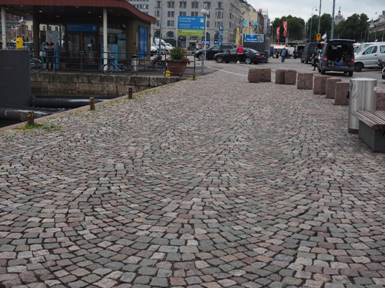 It is an optical illusion. The pavement is completely flat. After breakfast, we set out for a day-long tour. When the guide met us for the day's sightseeing we decided to go back to the places we saw yesterday but could not get a picture of again because of the rain.
Speaking of harbors. Helsinki is surrounded by the sea. However, it freezes every winter. Freezes solid. To allow the City to exist, they have become experts in constructing ice breakers. These monsters can break through ice 50 inches thick. They have four of them and they run all winter manned by rotating crews (who, in addition to sleeping and eating aboard, have saunas) thus keeping the harbors open for traffic. We, of course, had to visit the various cathedrals, one for each denomination. 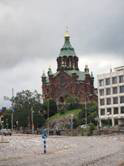 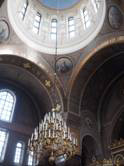 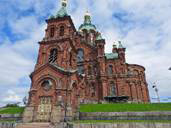 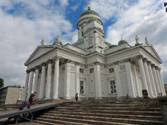 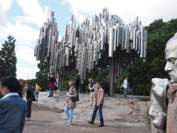
Our last stop on our do-over of yesterday's tour was the monument to Sibelius. It is thought of variously as organ pipes, stylized notes for one of his pieces, or anything else you might imagine. Utterly panned when it was first installed, it is now happily embraced by the Finns who, of course, already love their native son Sebelius and the sculpture has become a must-see for all tourists in Helsinki. One of the interesting local customs involves residents washing their area rugs in the Baltic Sea every year. (Because so much fresh water flows into the Baltic in this area, the water is brackish, not salty like the ocean, so rugs don't dry like a sheet of salt cod.) Communal rug washing is viewed as a fun social event that builds neighborly connections. The Helsinki government builds and maintains these washing tables, wooden drying racks, and large rollers (to press at least some of the water out) all around Helsinki and outside the city at various lakes. Rug washing time is also an occasions for families to gettogether for picnics. We, of course, have seen women washing rugs and their laundry at communal areas before. But most often this is done as a matter of necessity not choice. Apparently, the rugs are left out to dry overnight and are picked up in the morning. Robbery of the rugs is unheard of. 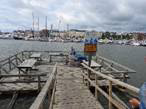 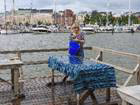 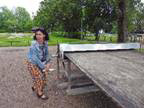 After photographing places we wanted to see in Helsinki, we drove into the countryside. On our last trip (and on others) this experience was one we looked forward to as the rural areas were usually less apt to be changed - more authentic in the sense of the traditional lifestyle and culture of the area. In this instance this was not so. The suburban area away from the City looked like suburbia anywhere in America (more akin to eastern suburbia because the homes were nestled in trees).
|